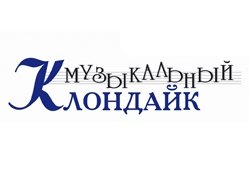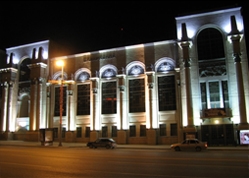What was the most significant Russian symphony composed between Tchaikovsky’s Pathétique and Shostakovich’s Fourth? According to the critic Malcom Macdonald, it was the Sixth Symphony by Nikolai Myaskovsky, one of the most prolific Russian/Soviet composers of the 20th century, yet still one of the least known, overshadowed by Dmitri Shostakovich and Sergei Prokofiev. He has had notable champions – Evgeny Svetlanov recorded all 27 symphonies – but it’s rare to encounter Myaskovsky’s music in the concert hall. However, the 140th anniversary of the composer’s birth has just been celebrated with a three-concert festival in the city of Yekaterinburg.
Performances with socially distanced audiences resumed in Russia some time ago. The Bolshoi and Mariinsky Theatres are back in full swing – Valery Gergiev’s already clocked up about 50 performances this year – yet, it’s still eye-opening to see a crowded concert platform, the 59 members of the Yekaterinburg Philharmonic Choir sardined together for the finale of the Sixth. String players of the Ural Philharmonic Orchestra shared desks and the only plexiglass in evidence was behind the single row of woodwinds, to protect them from brass decibels… protection that was definitely required!
The festival finale bore the title “A Dialogue with Fate” and was streamed live from the Great Hall of the Sverdlovsk State Academic Philharmonic. It paired Myaskovsky’s mighty Sixth Symphony with his late Cello Concerto, composed in 1944 when the Soviet Union was still firmly under Stalin’s iron fist. It’s a powerful work, in two movements, and Alexander Ramm, silver medalist of the 2015 Tchaikovsky Competition, gave a very fine performance. He drew a gorgeous tone, dripping with melancholy, in the elegiac first movement, in long conversations with the doleful woodwinds of the Ural Philharmonic under the attentive baton of Dmitry Liss. There are hints of Tchaikovsky in the lengthy Allegro vivace second movement, dotted with folk-like melodies, but the joy doesn’t last long. Ramm showed plenty of grainy bite in his cadenza and the long threnody that builds to an anguished orchestral climax, but the tranquil ending was played with serenity.
Myaskovsky began composing his Sixth Symphony in 1921. It’s Mahlerian in weight and length and reflects the long shadow of the October Revolution, the brutality of the new regime, and the personal losses of his aunt (a mother to him) and, in 1918, his father, whom he witnessed being shot dead by a revolutionary soldier. An introverted person, Myaskovsky only later revealed links between his experiences and the symphony, but it’s music that speaks for itself. When Nikolai Golovanov conducted the Bolshoi Orchestra in the 1924 premiere, members of the audience wept.
Dmitry Liss, Artistic Director and Principal Conductor of the Ural Philharmonic since 1995, knows the Sixth well and displayed a vice-like grip over its huge structure. With rapier baton slashes and a penetrating stare, he doesn’t look unlike Evgeny Mravinsky, although the occasional smile gave him away. The Ural Philharmonic strings brooded in the dark doom-laden opening movement, while the heavy brass displayed hints of the brazen Soviet sound of yore. There was a whiff of sulphur about the demonic Scherzo with its Dies irae motif, spikily accented, as well as melodic references to the Simpleton’s lament from Boris Godunov in the Andante moderato trio section.
The oily clarinet theme near the start of the sprawling Andante appassionato seemed to take its cue from Rachmaninov’s Second Symphony, Liss encouraging an expansive reading. The finale opened jauntily with quotations from French revolutionary songs La Carmagnola and Ça ira, but funereal chords – and that Dies irae again – interrupted, and the clarinet intoned an old Russian Orthodox burial hymn. The chorus entered, wailing its brief lament, but as the voices faded, the strings intoned a beautiful theme for the coda, radiantly played. Such excellent performances as these can only win Myaskovsky new friends.
Mark Pullinger


.jpg)

